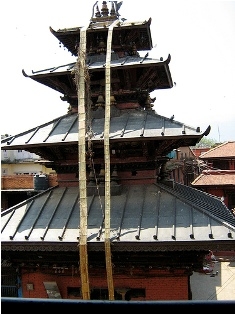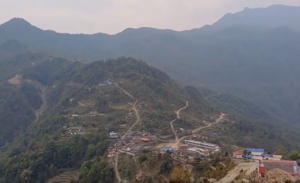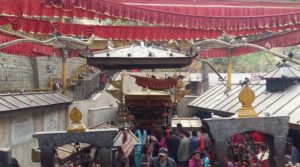Harisiddhi : A living museum of cultural values

Bhesh Jung Lamichhane ————————–

Lalitpur , an ancient locality of historic and cultural importance , is one of the major city in Kathmandu valley.Patan Durbar Square is listed as the World Heritage Site by UNESCO and the courtyards of Patan Durbar Square, Krishna Mandir, Taleju and Golden Temple, many Bihars, sculptures and shrines attract thousands of domestic and international tourists round the year . Harisiddhi is one of the most visited tourist site in Patan due to its sacredness associated with the Harisiddhi temple. Harisiddhi jatra is observed there during the festival of Holy Purnima every year.
Harisiddhi village , about eight km south of Kathmandu on the way to Godavari, is a popular religious site because of a temple dedicated to the goddess Harisiddhi trishakti bhavani. Hari or Lord Vishnu is supposed to be the preserver among the Trinity of the Hindus. The tantric priests wear the traditional long white skirts there. According to the researchers, Indian emperor Bikramaditya,the founder of Bikram Sambat , came to Nepal and set up Harisiddhi temple somewhere in Kantipur. Later, Goddess Harisiddhi was transferred to Harisiddhi village during Licchavi period and the present temple was built during the rule of Malla kings.
The goddess Harsiddhi is regarded as the creator of the world and also known as Tri-Shakti (three powered) goddess. It is said that the goddess has miracle power there. Five animals He-buffalo, goat, sheep, duck and a pair of fish are sacrificed to start the traditional dance in the temple complex and hot blood is offered to the goddesses. Animals are sacrificed only in dance day in the temple area. The ancient temple at Harisiddhi is popular for its traditional rituals .
The priests there use special attire, white loose fitting gowns, white jacket, tight fitting underwear and uncombed hair. The eldest son of the priestly class is entitled to succeed to the office and this tradition goes back to the medieval period of Malla rule. According to the national population and housing census 2011 , the total population of Harisiddhi village development committee is around 10,736 with 2737 households .The village is inhabited by farmers specially belonging to the Maharjan communities .The majority of the people despite its proximity to the capital and modern facilities are behind in education. Agriculture is the main occupation of the village. The traveler, who has heard the tale of human sacrifice, is even horrified to visit the temple area these days according to the researchers.
The goddess at Harisiddhi temple is said to have three mysterious powers. Four earthen pitchers are set up to symbolize the animation of the goddess when invoked. Every 12 year these vessels are replaced in the manner prescribed in the holy book. It is similar to the ritual of changing every 12 years the wooden image of Sri Jagannath Puri in India. The goddess is invoked at the top most floor of the temple. The public are not permitted to have the glimpse of the goddess except on specified days.
The rituals of the goddess are conducted both in Vedic and esoteric manner under guidance of the priest belonging to the Rajopadhya Brahmin involved in one or the other ritual there. Some of the rituals in other communities are done in the manner prescribed in the Tantras. The implication of the ritual is gradually losing ground as there are very people having depth knowledge of Tantric formula and the present generation is not interested to follow their predecessors. Harisiddhi village in Lalitpur district is one of the popular religious sites of Nepal heading towards modernization maintaining traditional values of the society.
(Journalist Bhesh Jung Badal writes on different issues including travel and tourism regularly.)
June 12, 2014














